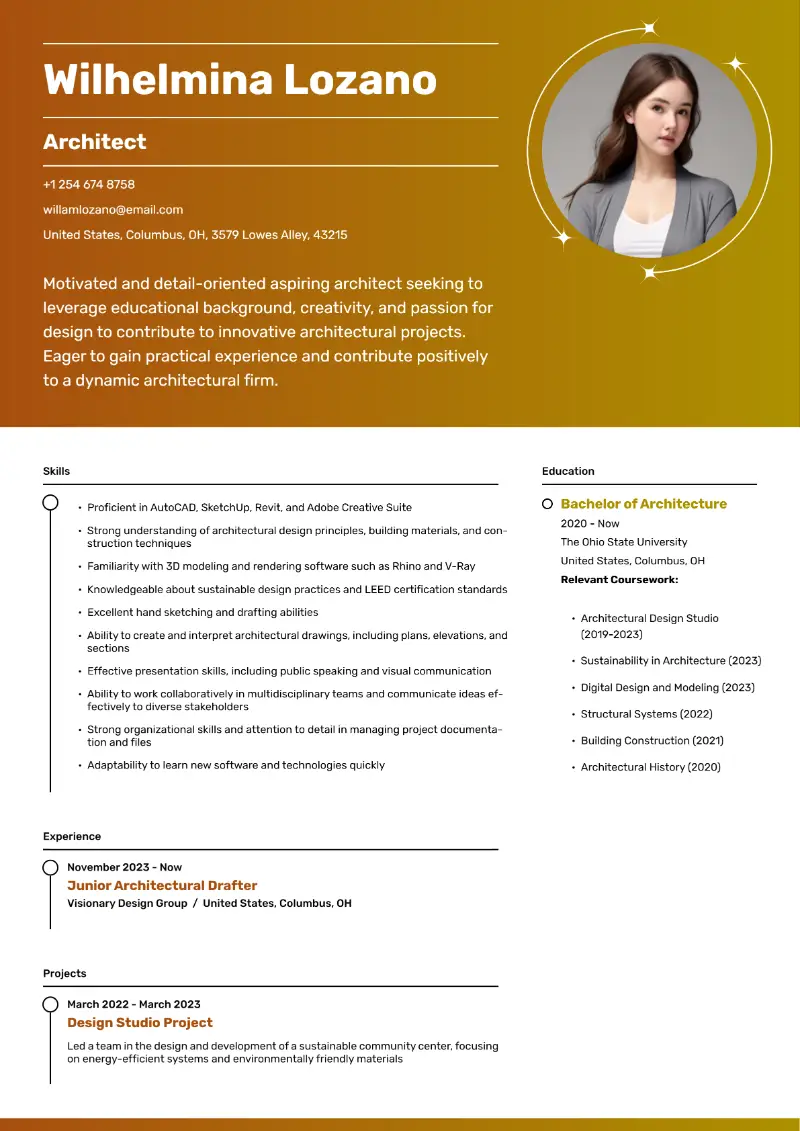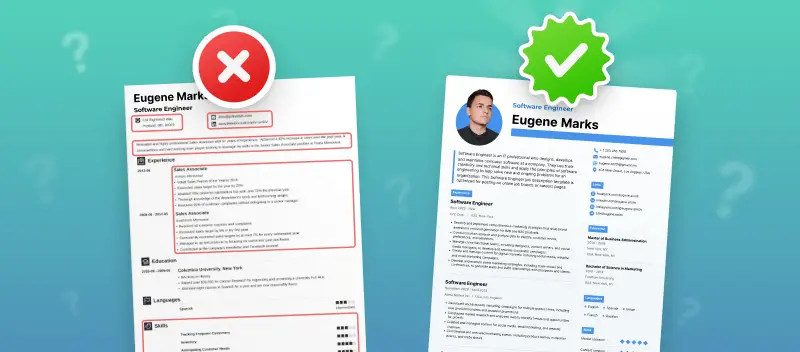In today's fast-paced job market, navigating the complexities of work history can be challenging, especially when it comes to gaps in employment.
Whether due to personal reasons, or the need to care for family, these breaks in your professional journey are more common than you might think. However, explaining them during interviews or on resumes can feel daunting.
In this article, we will explore how to explain gaps in employment, helping you to turn what might seem like a disadvantage into a compelling part of your narrative.
What is an employment gap?
Career gaps refer to a period of time when an individual is not engaged in paid work or does not have a job. It typically covers time two periods of employment.
What can be the reason for gap in employment?
While lapse in employment can raise questions during the job search process, it’s important to recognize that they are often the result of valid life circumstances.
1. Personal Health Issues
Health challenges, whether physical or mental, can lead to significant gap in work history. Individuals may face:
- Chronic Illnesses. Conditions like diabetes, heart disease, or autoimmune disorders may require ongoing treatment or periodic hospital stays.
- Surgery or Recovery. Major surgeries can necessitate extensive recovery time, during which returning to work may not be feasible.
- Undiagnosed Conditions. When symptoms are persistent but difficult to diagnose, individuals may need time off for testing, specialist consultations, or experimental treatments.
2. Family Responsibilities
Many people leave the workforce temporarily to fulfill family obligations, including:
- Childcare. New parents often take maternity leave for being a stay-at-home mom or dad and may extend this time.
- Elder Care. Caring for aging parents or relatives with health issues can demand significant time and attention, leading to employment gaps.
- Household Management. Managing household tasks during a spouse's job transition or relocation.
3. Education
Advancing one's skills is a legitimate reason for a gap:
- Pursuing Degrees. Enrolling in college or university programs to gain qualifications can take months or years.
- Certifications. Shorter programs, such as vocational training or workshops, may also yield time away.
- Self-Study. The rise of online education has made it easier to take courses, potentially leading to gaps as individuals focus on skill acquisition.
- Research or Thesis Work. Completing dissertations or major academic projects often requires stepping away from employment to meet academic deadlines.
4. Job Loss
Quitting from job can stem from various factors and often leads to unavoidable lapse in employment:
- Layoffs. Economic downturns, company restructurings, or downsizing can bring layoffs, leaving employees in search of new positions.
- Company Closures. Business closures, whether due to economic factors or other reasons, can abruptly end employment and create gaps in resumes.
- Performance Issues. In some cases, employees may leave due to performance-related terminations.
5. Relocation
Moving to a new location can disrupt employment:
- Job Search. Individuals changing city or country may need time to find suitable employment, which can lead to gap in work history.
- Adjustment Period. Transitioning to another requires adjustment, networking, and familiarization with the local job market, further extending the lapse.
6. Burnout
Work-related stress can impact individuals profoundly:
- Mental Health Focus. Candidates may seek time away from job to address health issues, participate in therapy, or engage in self-care practices.
7. Career Transition
Shifting occupations can involve gaps:
- Reevaluation. People may take time off to assess their current career paths, interests, and future long-term goals, especially if they seek a more fulfilling place.
- Industry Changes. The need to switch industries due to declining job markets may require individuals to take time to acquire new skills in a different field.
- Freelance or Trial Roles. Temporary projects or freelance work in a new domain can act as stepping stones, often taken before securing full-time employment.
8. Travel
Exploring new cultures and experiences can be invaluable:
- Tourism. Some individuals choose to travel extensively, either for personal enrichment, volunteer opportunities, or cultural exploration, causing breaks.
- Sabbaticals. Professionals may negotiate sabbaticals from their jobs to pursue projects, study, or take extended time off, resulting in significant employment gaps.
9. Entrepreneurship
Starting a business can result in gaps:
- Self-Employment. Individuals may choose to work as freelancers, which may not provide a consistent income or formal employment structure, producing perceived gaps.
- Project-Based Business. Working on short-term contracts or project-based roles can produce periods without continuous employment, especially in consulting work.
10. Economic Factors
Broader financial conditions can impact employment:
- Recessions. Downturns can lead to widespread job losses and make finding new position difficult, facilitating longer gap in work history for many individuals.
- Shifts in Industry Demand. Changes in market trends or technology can render certain skills obsolete, requiring workers to take time to retrain or pivot careers.
How to explain gap in resume?
Explaining gaps in employment can be a delicate task. But with the right approach, you can present it positively and reassure HR about your qualifications and readiness for the job.
Here are some effective strategies to address career gaps on your resume:
- Be Honest and Transparent
- Clearly and truthfully explain the reason for the gap.
- Provide enough detail to clarify the lapse without going into excessive personal information.
- Keep your gap explanation professional and concise.
- Focus on Skills Gained
- If you studied new attributes during your time away from work, mention those abilities prominently in your resume.
- Emphasize any transferable skills relevant to the job you’re applying for, such as communication, problem-solving, or project management.
- Use Functional or Combination Resumes
- Functional Resume: This format focuses on abilities and experience rather than chronological work history. It can help de-emphasize career gaps by highlighting your attributes.
- Combination Resume: This type includes both a skills section and a timeline of your previous positions.
Functional resume example:
- Address the Gap in Your Cover Letter
- Use your application letter to briefly explain the employment gap and any relevant experiences during that time.
- Express your motivation for returning to work and how your background have prepared you for the role.
Example:
- Summary/Objective
- Include a brief opening statement that emphasizes your experiences, subtly shifting focus from the gap.
- Use this section to showcase your accomplishments and strengths.
Example:
Dynamic analyst with 5 years of experience in investment management and reporting. After a brief pause from 2022 to 2023 to explore new opportunities and transition into a data analytics role, I have gained valuable insights through self-directed learning. My recent certification in data analysis complements my background, allowing me to bring a unique perspective to financial decision-making.
- Emphasize Continued Learning
- If you participated in any online courses, workshops, or certifications during your gap, list them on your resume to demonstrate a commitment to professional development.
- Mention any volunteer roles or unpaid work that kept you engaged and helped you develop valuable skills.
- Network and Get Recommendations
- If possible, network with former colleagues or industry contacts who can vouch for your work ethic.
- Secure references who can speak positively about your abilities and character, providing credibility despite any gaps in your employment history.
Example of explaining employment gaps on resume:
Create your professional Resume in 10 minutes for FREE
Build My Resume
How to explain gaps in employment in during an interview?
Addressing career gaps during job meetings doesn’t have to be intimidating.
Provide a short, straightforward answer without going into extra private detail. Aim to be clear and to the point. Rehearse your gap explanation so you can deliver it smoothly and confidently.
Discuss any new skills or experiences gained during your time away that are relevant to the position. Share how the experience helped you grow personally. If you took courses, volunteered, or worked on personal projects, mention these activities to show you remained engaged and productive.
Emphasize your renewed motivation and readiness to contribute to the organization. Avoid negative phrasing; instead, focus on the positives that emerged from the situation.
Be prepared for follow-up questions regarding your lapse in employment. Think about how to address any concerns the interviewer might have.
Maintain a positive demeanor, showing that you are comfortable with your past choices and excited about future opportunities. You can ask the interviewer how they perceive career gaps. This can shift the focus away from your situation and open a dialogue.
Why is there a gap in your employment - example responses
Example 1: Family caregiver
From January 2020 to August 2021, I took a break from my position as a Project Manager at IBM to care for my elderly parents. They required full-time assistance due to health issues. During this time, I developed strong organizational and multitasking skills while managing their medical appointments and daily care.
Additionally, I completed an online certification in Agile Project Management through Coursera. It has prepared me to re-enter the workforce with a fresh perspective. I’m now excited to apply my skills in a new role.
Example 2: Health Reasons
I stepped away from my career as a Software Developer at Microsoft from March 2021 to November 2022 due to a health condition that required surgery. This break allowed me to focus on my health, and during my recovery, I utilized online platforms like Pluralsight to learn about machine learning.
I’m now fully recovered and eager to bring my enhanced technical skills and fresh enthusiasm to a role at Google.
Example 3: Career Transition
After five years as a Financial Analyst at JPMorgan Chase, I decided to transition into Data Analytics. This led to a gap from June 2022 to February 2023. During this time, I enrolled in a Data Analytics Bootcamp through General Assembly, where I learned essential skills in data visualization and SQL.
This educational experience has given me a solid foundation to analyze complex datasets. Now I’m excited to leverage both my finance background and new analytics skills in a role with Amazon.
Example 4: Education Pursuit
I took a career break from July 2020 to June 2021 to pursue my MBA at Stanford University. This experience was transformative, as I learned about strategic management and leadership. I also participated in several case competitions, which helped me develop my analytical and problem-solving skills.
I’m now looking forward to applying the knowledge and skills I gained during my studies to a challenging role at Deloitte.
Example 5: Travel and Personal Growth
From September 2022 to April 2023, I took a sabbatical to travel across Europe and volunteer with various NGOs, focusing on environmental conservation projects. This experience enriched my understanding of global issues and honed my project management skills in real-world settings.
While traveling, I also freelanced as a graphic designer for local businesses, which allowed me to keep my creative skills sharp. I’m eager to bring my unique perspectives and skills to a position at Adobe.
Example 6: Job Market Conditions
After leaving my Coordinator role at Procter & Gamble in December, I faced a challenging job market that extended my search until March 2023. During this time, I took several online courses in digital marketing and social media strategy through HubSpot Academy to enhance my skills.
I also volunteered with a local nonprofit to manage their social media campaigns, which allowed me to stay engaged in my field. I’m now excited about the opportunity to apply my updated skills in a new role with Unilever.
Example 7: Entrepreneurship
I took a gap from August 2020 to October 2021 to start my own business, a small e-commerce store focused on sustainable products. While it was a valuable learning experience in entrepreneurship and marketing, I decided to return to the corporate world for more stability.
During this time, I developed skills in customer relations and online marketing, which I believe will be beneficial in a marketing role at Nestlé. I’m ready to bring my entrepreneurial spirit and skills to contribute effectively to your team.
FAQ
- How long is too long of an employment gap?
- It depends on the context, but a period of several months to a year is common and can usually be explained satisfactorily.
- What if the gap is due to unemployment or job search struggles?
- Be honest, but focus on how you used that time productively, such as upgrading skills, networking, or freelancing.
- Can I avoid talking about the gap in interviews?
- It's better to address it upfront, as avoiding the topic might come across as evasive.
- How do recruiters typically view gaps?
- Most hiring managers understand that life events happen. What matters more is how you explain the situation and demonstrate readiness to contribute now.
Conclusion
Rather than viewing these employment gaps as a liability, consider them opportunities to showcase your resilience and adaptability. By effectively communicating your experiences during these periods, you can demonstrate to potential employers that you have grown both personally and professionally.
As you prepare for interviews or create your resume or update it, remember that transparency is key. A well-crafted explanation that emphasizes the lessons learned can turn a potential red flag into a conversation starter.
Ultimately, every career journey is unique, and gaps in employment do not define your capabilities or potential.
Create your professional Resume in 10 minutes for FREE
Build My Resume






